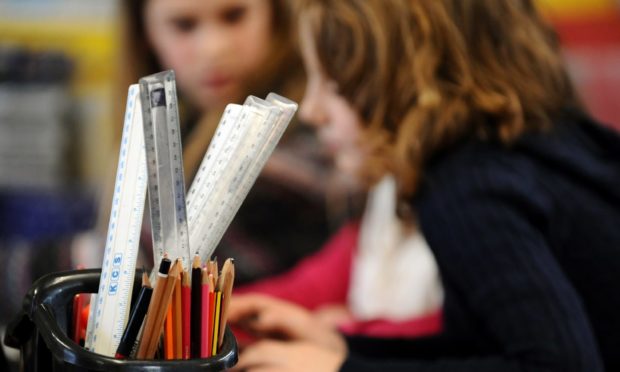All schools have seen a significant impact on pupils from Covid-19 closures, according to a report on attainment by Fife Council.
Progress on closing the poverty-related attainment gap has been made over the last few years, but primary school year groups have now fallen short of literacy and numeracy targets.
The impact is most severe on those in P2, P3 and P4.
Education bosses said they are targeting the most disadvantaged learners with work supported by the Scottish Government’s Attainment Scotland Fund.
Schools were closed for around three months during lockdown and pupils were encouraged to learn at home using assignments issued online – and in some cases delivered to homes – by teachers.
However, the lack of face-to-face teaching and varying levels of engagement by families meant pupils missed out on learning time.
Upon return after the summer break all schools are reporting a significant impact of the Covid-19 closures on their pupil group, particularly those in P2, P3 and P4.”
Sarah Else, Fife Council education manager
Education manager Sarah Else spelled out the extent to which teachers are now seeing the impact in classrooms.
She said: “Upon return after the summer break all schools are reporting a significant impact of the Covid-19 closures on their pupil group, particularly those in P2, P3 and P4.”
At the end of the 2018/19 school year, all primary schools went beyond expectations in meeting national targets for P1, almost all were beyond targets for P4 and most for P7.
Following lockdown closures overall attainment for the same year groups dropped below the targets for numeracy and literacy.
It was, however, stressed that access to tracking and monitoring systems and challenges in assessing pupils online meant that the data may not be as robust as usual.
Attainment funding
Over the last five years, schools across Scotland have received grants from the Scottish Government’s Attainment Scotland Fund to tackle the attainment gap.
Last year Fife Council schools received £10 million in Pupil Equity Funding, which is spent by head teachers and can be used to employ extra staff or implement initiatives, such as addressing digital exclusion.
It allowed the appointment of 98 teachers and 87 pupil support assistants.
Education officers visited a number of schools and found evidence of progress in all areas of attainment but that further work was needed to support staff.
In a report to the council’s education and children’s services sub-committee, Ms Else said: “Our most disadvantaged learners will remain a focus of our work, as though it is essential that we consider the equality aspect of learning and ensure that all of our young people have access to high quality learning and teaching, it is vital that we pay close attention to those learners identified through our Attainment Scotland Fund work, and look to ensure that these young people receive more than the provision for all and that there is a continued focus upon equity.”
Successful interventions are to be built on, she said, and where there has been less success plans have been revised.
She added: “Whilst our focus is, as always, upon the increased attainment for our pupils, there is a need to recognise and celebrate the work that is being undertaken in schools in relation to the incremental improvement in outcomes for learners through targeted interventions funded by the Attainment Scotland Fund.”










